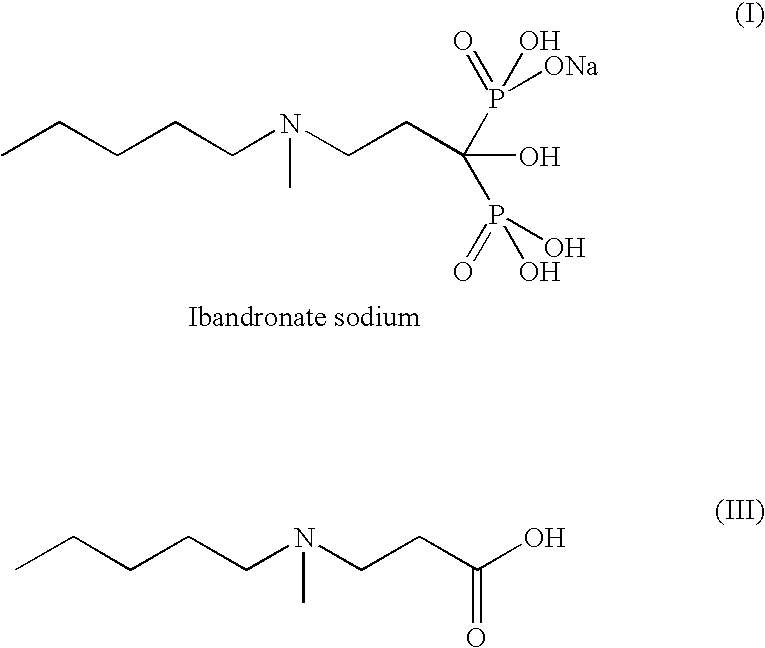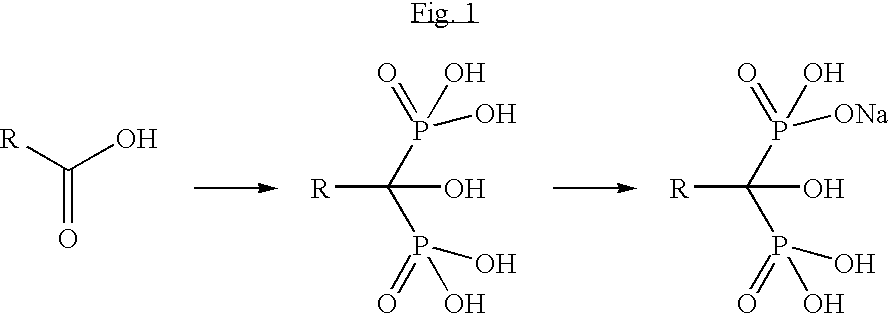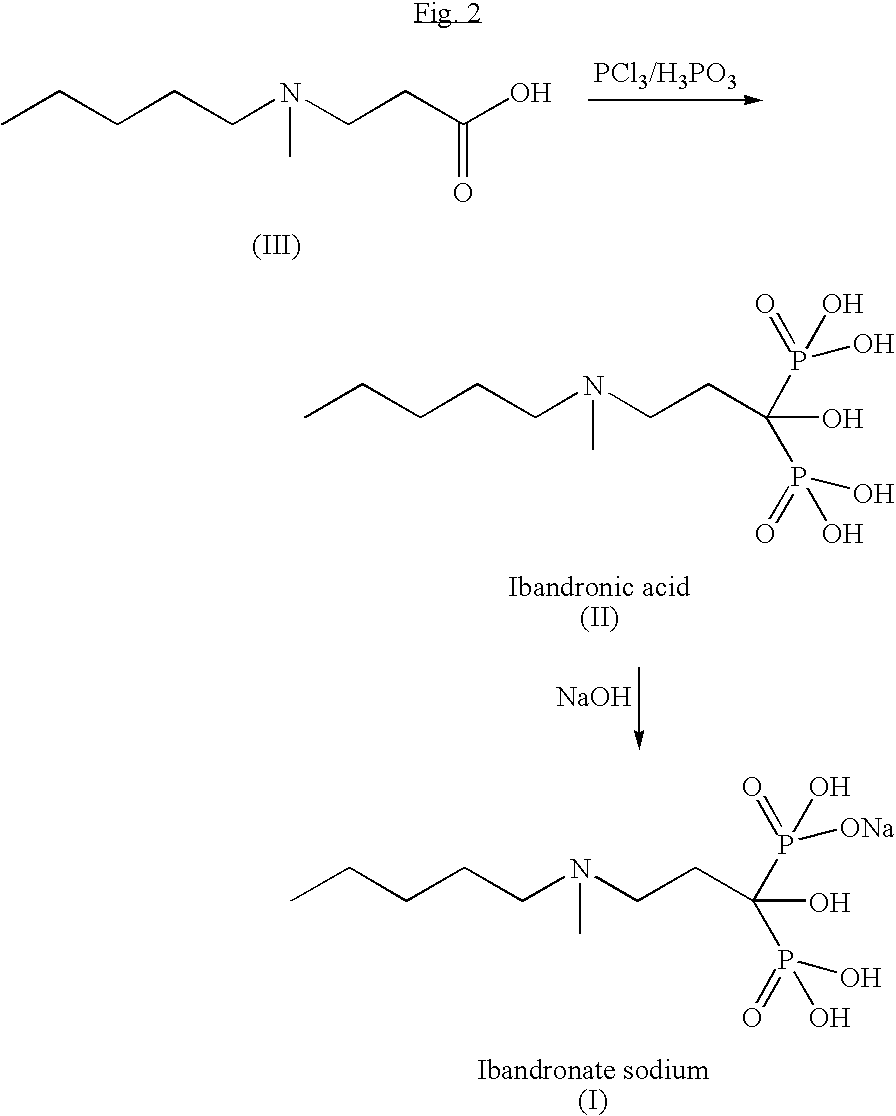Process for the synthesis of ibandronate sodium
a technology of ibandronate sodium and synthesis process, which is applied in the preparation of amino-carboxyl compounds, organic chemistry, group 5/15 element organic compounds, etc., can solve the problems of no exemplary disclosure, difficult operation and time-consuming industrial scale, and difficult isolation from water, etc., to achieve simple, economical and industrially viable process
- Summary
- Abstract
- Description
- Claims
- Application Information
AI Technical Summary
Benefits of technology
Problems solved by technology
Method used
Image
Examples
examples
Preparation of N-Methyl N-Pentyl Benzyl Amine (VI)
[0049]N-methylbenzylamine 100 gms (0.82 moles), acetone (200 ml) and potassium carbonate 114 gms (0.82 moles) were mixed at room temperature and to the slurry obtained, 1-bromopentane 211.4 gms (1.4 moles) was added dropwise at room temperature. Reaction mixture was stirred at room temperature for 18 hours. The reaction mixture was filtered, washed with acetone and concentrated under vacuum to an oily residue. The residue was dissolved in MDC (200 ml) and washed with water (3×100 ml). Organic layer was dried over sodium sulphate and concentrated under vacuum to get 154 gms of the title compound as an oil.
Preparation of N-Methyl, N-Pentylamine (V) Oxalate
[0050]Debenzylation of N-methyl-N-pentylbenzylamine (154.8 gms, 0.81 moles), was carried out under a constant pressure of 2 kg / cm2 of hydrogen, using 10% Pd / C as catalyst, and absolute alcohol (750 ml) as a solvent over a period of 12 hrs. The reaction mixture was filtered through hyf...
PUM
| Property | Measurement | Unit |
|---|---|---|
| Temperature | aaaaa | aaaaa |
| Temperature | aaaaa | aaaaa |
| Temperature | aaaaa | aaaaa |
Abstract
Description
Claims
Application Information
 Login to View More
Login to View More - R&D
- Intellectual Property
- Life Sciences
- Materials
- Tech Scout
- Unparalleled Data Quality
- Higher Quality Content
- 60% Fewer Hallucinations
Browse by: Latest US Patents, China's latest patents, Technical Efficacy Thesaurus, Application Domain, Technology Topic, Popular Technical Reports.
© 2025 PatSnap. All rights reserved.Legal|Privacy policy|Modern Slavery Act Transparency Statement|Sitemap|About US| Contact US: help@patsnap.com



